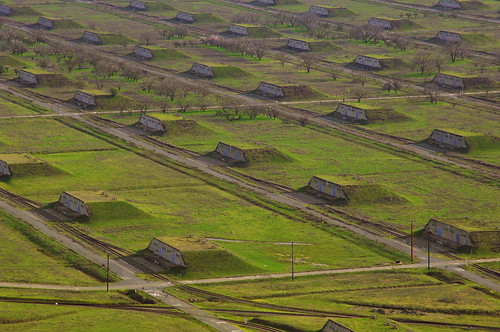Watch Charles and Ray Eames pitch Eero Saarinen's "Mobile Lounges"
Our flight got diverted through Washington D.C.'s Dulles airport, and on the way through we were herded into one of these bizarre vehicles (which you might recognize if you've been there yourself) for a ride to the next terminal. They kind of resemble an open-plan double-wide trailer stacked atop a tank chassis:
 (image from Wikimedia Commons)
(image from Wikimedia Commons)Being in Washington, my initial guess was that these were the unwieldy product of some pork-barrel military industrial contract. But I was mistaken — these weird buggies are actually the vestigial remnants from an unfulfilled future of jet travel.
In 1958, the architect Eero Saarinen was commissioned to design Dulles, which would be one of the first major airports built from scratch to serve jet aircraft. Foreseeing the long walks and sprawling terminals of our modern era, Saarinen suggested that it would be better to employ a kind of satellite parking system for planes, with passengers shuttled from a compact, comfortable terminal onto the tarmac via these mobile boarding platforms, which he called "mobile lounges".
I could go into more detail about the details and rationale behind this idea, but luckily for us Saarinen commissioned this wonderful short film from his friends Charles and Ray Eames as part of his campaign to sell the authorities on his design, so I'll just let them explain it:
Untitled from CHRISTINA LAETZ on Vimeo.
The mobile lounges are like a horizontally-oriented elevator: a door opens, you walk in, you wait a while, another door opens and you exit somewhere else. Airport travel was more glamorous back then, though: on our short ride between the modern Dulles terminals, the mobile lounge was pretty dingy and crowded — certainly nothing like the luxury buses depicted in the Eames' cartoon.
Saarinen's concept enjoyed a brief popularity in the early 1960s — mobile lounges were also adopted at Montreal's Dorval airport and Charles de Gaulle in Paris — but like the Betamax video player, they were an innovation that never quite caught on.



































